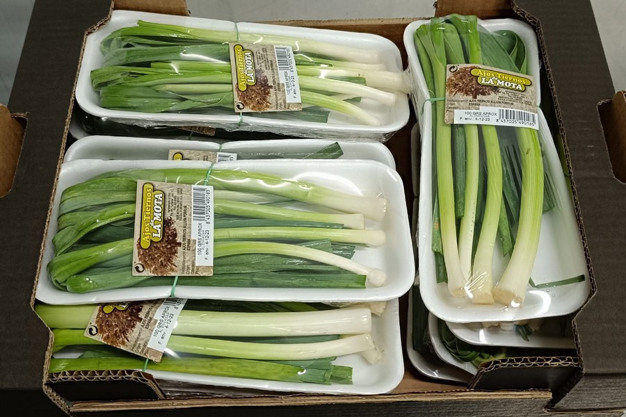The Spanish Spring garlic season, currently underway in provinces such as Cuenca, has not been affected by the rains in Valencia, another of the country's most important production areas. According to Miguel Antonio Olivares, of La Olma, "the main production area in the Levante region was not affected by the storm and floods, and based on what the growers have told us, the rains were actually welcome."
"This is still a difficult time for the crop, although for other reasons. In the Levante area, they traditionally sow Majorcan seeds, but virus pests, which are becoming more and more frequent, and the fact that growers are giving up on the activity because they are finding it very difficult to find workers, are resulting in scarcity of the seed, so Chinese Spring garlic is gaining ground on the high quality Majorcan garlic which had been used until now," says Olivares.

"The lack of workers is becoming a common problem for the entire primary sector. There is a shortage, and labor costs are increasingly expensive. I would go so far as to say that the non-Spanish workers who come every season to work in the Spring garlic or dry garlic campaign, or in the vineyards, are the ones keeping agriculture alive in towns such as Mota del Cuervo, where I have my company," says the grower.
"From this town, where I have been mayor and councilor, I serve large Spanish retail chains on a daily basis, including El Corte Inglés, Carrefour and the Ahorramás group. I am passionate about Spring garlic cultivation and, after working as a technician at the Copaman garlic cooperative, I decided to specialize in this gourmet product.

"Just because it is so exclusive, it is usually sold in trays of 100 or 150 grams; at most, 200 grams, although there is a growing trend to sell it in bunches," says Olivares. "The most interesting aspect is that its prices are very stable, unlike those of dried garlic, which can fluctuate greatly from one year to the next."
"Fortunately, the harvest can be mechanized to a certain extent and, given the high density of Spring garlic crops, significant sales can be achieved with a small area. The production per hectare can reach 30,000 kilos and the price at source usually oscillates between 1.20 and 1.30 euros per kilo, which entails a gross revenue of more than 36,000 euros per hectare."

"Moreover, Spring garlic continues to be consumed all year round throughout the Mediterranean arc, so even though the agricultural sector has been hit by uncertainty and even a certain amount of fear lately, I am optimistic about the future of Spring garlic," says Miguel Antonio Olivares.
"Moreover, in my case, I am very fortunate in knowing that my business will remain operative when I retire. In Mota del Cuervo, I would say that the average age of active growers must be around 70. Many of them have very good and profitable farms, but in a few years, when they start having health issues or other ailments, they will have to give up, because there is nobody willing to take over the activity."
"In my case, my son wants to continue growing the Spring garlic that has turned La Olma into the biggest specialist in this vegetable in Spain. We have continued to supply our customers every day without fail, and now I am sure that we'll be able to continue supplying the market in the future with the same quality and commitment," he says.
 For more information:
For more information:
La Olma
Polígono Industrial La Serna, parcela 11
16630 Mota del Cuervo, Cuenca, Spain
Tel.: +34 967 182 557
[email protected]
www.laolma.es
